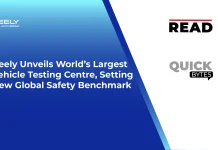Gymnast of chemicals, the awesome hydrogel is a 3D network of hydrophilic polymers like a giant molecule that can swell in water and hold at least 10% of water while maintaining a well-defined structure. Medical hydrogels currently dominate hydrogel publicity, patents, and research but the rest will become a larger business 2022-2042. It is time to read the brand new IDTechEx report, “Hydrogel Markets in Agriculture, Industry, Energy, Electronics, Electrical, Consumer 2022-2042”.
Also Read: Simply Organic Announces New Grants to Frontline Organizations Addressing Food Insecurity
Alternative terms are crosslinked hydrophilic polymer CHP and super absorbent polymer SAP though the more pedantic scholars argue that these terms even embrace forms unable to hold as much as 10% water. Mainstream hydrogels absorb up to 1000 times their weight in water, releasing it in a controlled way, yet barely dissolving in water. They can grab and transport selected elements, molecules, nanoparticles. Some are hard as glass only when you jump on them, others have shape memory. The magical properties and applications of hydrogels depend on formula, crosslinking agent, synthesis route, and bonding chosen. For example, soft robotics can have self-healing, sensing, stretchable skin disturbingly like our own.
Which of the applicational sectors will gain hydrogel market share and why? What enabling technologies are broadly applicable? Raghu Das CEO of IDTechEx advises,
“Cutting across most applicational sectors, self-healing and membrane hydrogels turn out to be extremely important for the future. Hydrogels can be tailored to be phase changing, shape memory, toxigen and rare metal-grabbing and so much more. The properties can be useful in the new structural electronics and many types of sensors. Hydrogel membranes are candidates for desalination, flexible supercapacitors, future batteries, fuel cells, uranium extractors from water and other devices. We find that water management, soft robotics, electronics, and electrics are among the particularly attractive hydrogel markets ahead.”
The dark side includes some hydrogels creating toxigens and not being properly tested for toxicity. Some compete poorly with non-hydrogel alternatives.
Das continues, “We are sure that one-billion-dollar businesses can be made at the new hydrogel frontiers by those identifying the best gaps in the market and protecting their intellectual property. Currently, there is minimal patenting by researchers outside medical. Participants will benefit society, from smart cities to ample food and water, electricity with zero-emission and so much more because a vast number of hydrogel variants will be tailored to a large variety of newly-targeted needs.”




